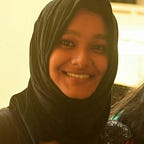bReview
Behind the Beautiful Forevers
Beautiful Forever. Beautiful Forever. Beautiful Forever. What do they hide?
There’s a hoarding right outside the Mumbai International Airport, advertising Italian floor tiles that stay beautiful forever. It reads,
Beautiful Forever.
Beautiful Forever.
Beautiful Forever.
Concealed by the advertisement from the eyes of arriving international travelers, hidden behind the magnificent view of the soaring airplanes and dignified hotels, stowed away in an unwanted location is a small slum — Annawadi, home to about a thousand households. Surrounded by filth and discards from the edifices around it, the slum is also home to diseases, illiteracy, hunger, and poverty.
For most of the Indian elite, slums symbolize a source of problems. They are dangerous, overpopulated, unsanitary and major roadblocks on the way to India’s superpower position. Their very mention evokes disgust, indifference or fear.
I knew when I got to the first page of Katherine Boo’s National Book Award-winning title that there was no turning back. The plot moves fast in a tense environment, and every page makes for a compelling read.
Behind the Beautiful Forevers: Life, Death, and Hope in a Mumbai Undercity is full of the empathy that these slum dwellers deserve and rarely get; their aspirations and dilemmas, painstakingly documented over a span of three years are served with a dollop of brilliant storytelling.
At the center of the story is Abdul, a sixteen-year-old boy. He is one of the few Muslim residents of Annawadi who ekes out an income by sorting garbage which he started at the age of six. Today, at sixteen (by guesses, since his parents are not certain about dates) he runs the scrap business that was once his father’s.
All-day, he sits in the sun, soaking in sweat, checking the trash brought in by scavenger kids from the discards of upscale quarters in the immediate vicinity. He purchases each valuable piece of trash to be sold in the city later. Ever since his father Karam Hussain was hit by tuberculosis, Abdul has been in charge of the house, raising his brothers without dreams of his own.
At one point, he chokes back tears when he sees his two-year-old brother’s face marked by rat bites. He dreams of the day his family will be able to leave their stinking, shabby home in Annawadi and settle in Vasai where he believes they’ll be safer.
But fortune has other plans for Abdul; one fine day, his family is sucked into a turbulent vortex of injustice, corruption, and greed.
Although the story touches multiple aspects of slum life, it mostly winds through the life of slum children themselves. Abdul is one of the lucky ones to have a loving family and somewhat better living conditions, but orphans and girls bound to abusive families often meet ghastly misfortunes.
What becomes of these children of the slum — uneducated, impoverished, tormented by maladies and drugs, bound to bad families, forced into petty crimes and brutalized by men in power — is at the heart of the story and was my most important takeaway from the book.
It also asks pertinent questions, like why poor slum dwellers usurp the opportunities of other poor slum dwellers. Probably because opportunities are such a rarity; in fact, most slum dwellers dream to somehow fit into the urban lower middle class, space for which is especially narrow and shrinking for people from places like Annawadi. There is also the question of Maharashtra’s politics and how it influences the slum; with Abdul’s family at the receiving end of the hatred, and the ostracisation it cultivates.
This book explores the complex motives, desires, and attitudes that shape the life and death of Annawadians; it does not withhold even the gore details — after all, a place wide open to drug peddlers and drug abusers, corrupt policemen and politicians, fraudulent social workers and vulnerable children is only bound to have its share of dark endings.
The book had owned me — I was bound to it emotionally and physically so much so that in the four days I took to complete it, I couldn’t think of anything else. At the end of a long day at work, I just had to go back to Annawadi and find out what Abdul was doing. I needed to know if his family was okay. I needed to know if Manju still had ambition and hope. The slum was living out its existence, earning its bread, failing, aging, dying, and being born again.
Few books have shaken me like this one, bursting at the seams with unfulfilled dreams, shattered homes, and elusive justice. As a foreigner, Katherine Boo has walked the extra mile to collect hundreds of stories and cases from the residents themselves, string them together, and produce one of the best works of non-fiction of our times.
Behind the Beautiful Forevers is a book that you must read; even more so, if you’re drawn into the intricacies of life, the politics of hate, the thought processes behind choices, failures and new beginnings, and inevitably, death.
